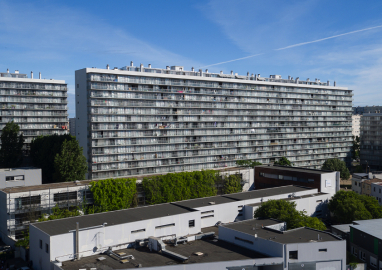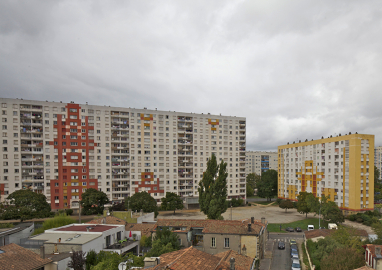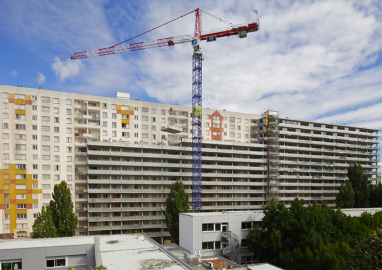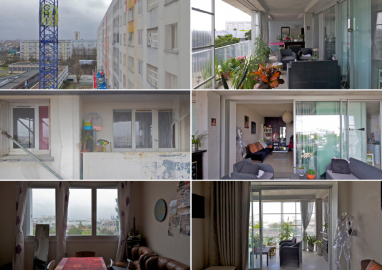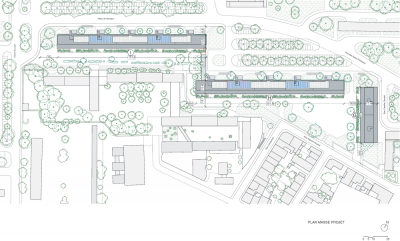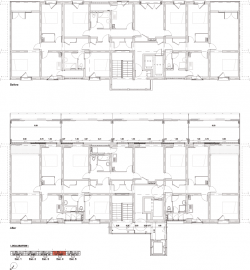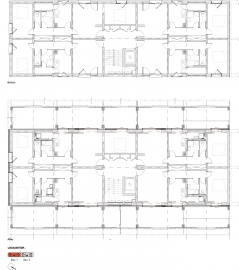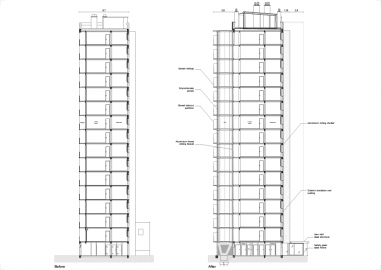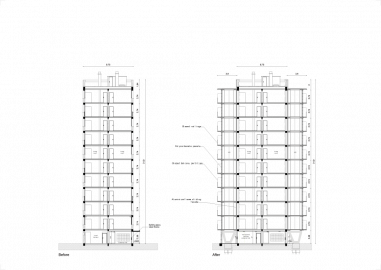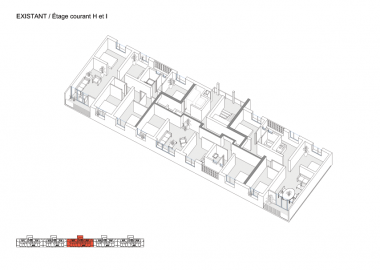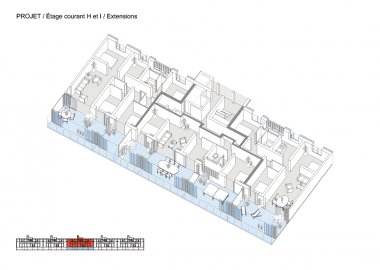Transformation of 530 dwellings - Grand Parc Bordeaux
The project consists in the transformation of 3 social housing’s buildings of 530 dwellings.
Built in the early 60’s, they needed a renovation after their demolition has been ruled out. The transformation of the dwellings full occupied, starts from the interior, to give them new qualities: more space, more light, more view, and upgrade the facilities.
The transformation gives to all dwellings new qualities of space and living, by inventorying very precisely the existing qualities that should be preserved, and what is missing that must be supplemented.
The addition of large winter gardens and balconies in extension of the existing give the opportunity, for each apartment, to enjoy more space, more natural light, more mobility of use and more views.
The existing small windows are replaced by large glazed sliding doors opening onto the winter garden.
The technical facilities are upgraded: bathrooms electrical installation, the two former elevators in every staircase are replaced by a bigger one and supplemented by a new elevator.
New access halls are done and the gardens in front of the building are improved. All the families stayed in their dwelling during the construction works. No increase of rent after the transformation.
While the high-rise buildings for luxury housing are now designated as examples of ecological housing, the G, H and I buildings offer the opportunity to reach these qualities immediately, in a generous, economic and sustainable way.
Due to the proposal of transformation with all inhabitants inside, the project excludes interventions on the existing structure, stairs or floors, and proceeds by additions and extensions, large enough to be fully used. Inside the flats, only refurbishment of facilities or finishes has been done.
The extensions of 3,80m deep widen the space of use and the mobility through large glazed sliding doors connecting every room to the winter garden, offering, as in a house, a pleasant private semi outdoor space.
The energetic performance of the building envelope is highly improved by the addition of winter gardens which act as passive solar collectors.
The work on economy allows to concentrate the budget on the extensions, the key point to improve in a significant and sustainable way the dwellings quality. The overall cost of transformation respects the budget, based on the usual cost for a basic renovation of facades, insulations, and facilities.
In order to reduce the duration of the works, the construction uses prefabricated modules, fast built like scaffolding in front of the building. Precasted slabs and columns are transported to the site and lifted into position by a crane to form a freestanding structure. Concrete poured in place was used only for foundations.
Along the added structure, the original windows are removed in a specific intervention to take care of asbestos-contaminated seals. Concrete window sills are removed to open from floor-to-ceiling, and create double-glazed sliding doors. Thermal curtains behind the glass provide extra insulation to the heated interiors.
On the other side, a lightweight façade of transparent, corrugated polycarbonate panels and glass in aluminium frames is assembled and equipped with reflective solar curtains. Glazed hand railings run along the balconies.
A proper planning and scheduling of the construction site allowed to achieve the transformation in just 12-16 days per apartment: half day for laying the concrete slab, 2 days for adapting the old façade, 2 days for placing the new façade, and 8-12 days for renovating the interiors.

